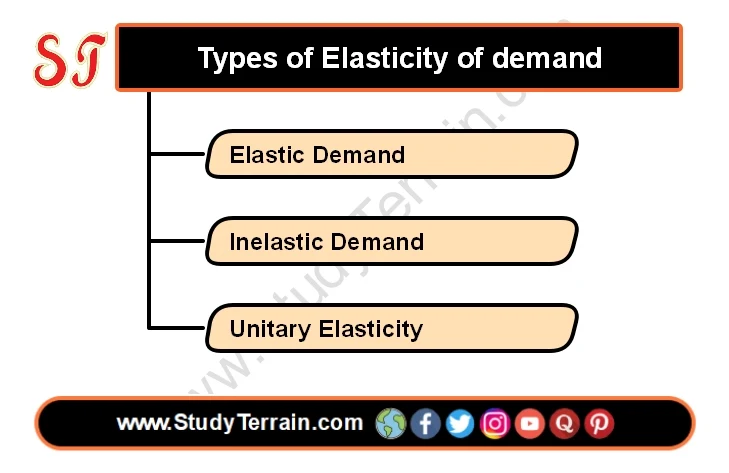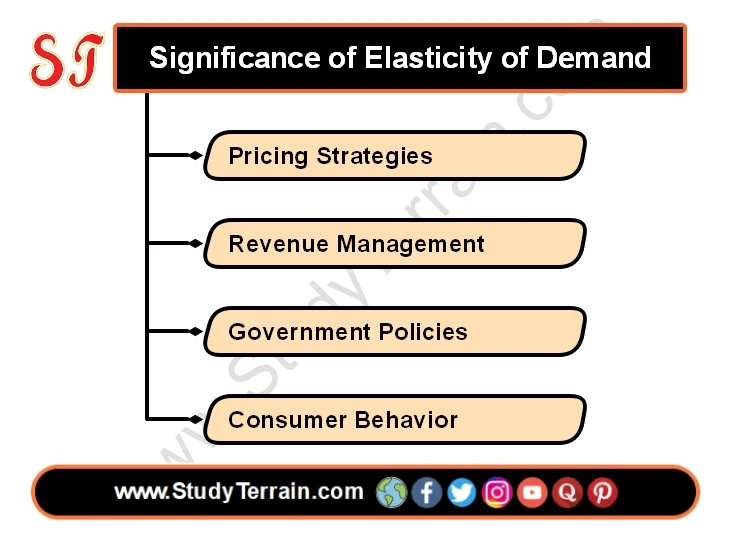In the field of economics, understanding elasticity of demand is essential for assessing how changes in price affect the quantity demanded of a good or service. Elasticity of demand measures the responsiveness of quantity demanded to changes in price, providing valuable insights for businesses, policymakers, and consumers alike. In this article, we'll explore what elasticity of demand is, how it's measured, and provide examples to illustrate its significance.
Table of content (toc)
What is Elasticity of Demand?
Elasticity of demand refers to the degree of responsiveness of quantity demanded to changes in price. In other words, it measures how much the quantity demanded changes when there is a change in the price of a good or service.
Types of Elasticity of demand
 |
| Types of Elasticity of demand |
Elastic Demand
When demand is elastic, a small change in price leads to a proportionately larger change in quantity demanded. Elastic demand is represented by a coefficient greater than 1.
Inelastic Demand
When demand is inelastic, a change in price leads to a proportionately smaller change in quantity demanded. Inelastic demand is represented by a coefficient less than 1.
Unitary Elasticity
When demand is unitary elastic, the percentage change in quantity demanded is equal to the percentage change in price. Unitary elasticity is represented by a coefficient of exactly 1.
How is Elasticity of Demand Measured?
The formula to calculate elasticity of demand is:
Elasticity of Demand
= Percentage Change in Quantity Demanded / Percentage Change in Price
If the resulting value is greater than 1, demand is elastic.
If the resulting value is less than 1, demand is inelastic.
If the resulting value is exactly 1, demand is unitary elastic.
Example of Elasticity of Demand
Let's consider the demand for gasoline. Suppose the price of gasoline increases by 10%, and as a result, the quantity demanded decreases by 20%.
Percentage Change in Quantity Demanded = 20 / 100 = 0.20
Percentage Change in Price = 10 / 100 = 0.10
Using the formula for elasticity of demand
Elasticity of Demand = 0.20 / 0.10 = 2
Since the resulting value is greater than 1, the demand for gasoline is elastic. This means that consumers are highly responsive to changes in the price of gasoline. If the price increases, consumers will reduce their quantity demanded by a relatively large amount.
Significance of Elasticity of Demand
Understanding elasticity of demand is crucial for various reasons:
 |
| Significance of Elasticity of Demand |
Pricing Strategies
Businesses use elasticity of demand to determine the optimal pricing strategy for their products. For example, if demand is elastic, businesses may reduce prices to increase revenue.
Revenue Management
Elasticity of demand helps businesses forecast changes in revenue in response to changes in price.
Government Policies
Policymakers use elasticity of demand to assess the impact of taxes, subsidies, and regulations on consumer behavior and market outcomes.
Consumer Behavior
Consumers can use elasticity of demand to make informed purchasing decisions, especially when comparing the price and value of different products.
Conclusion
Elasticity of demand is a vital concept in economics, providing valuable insights into consumer behavior and market dynamics. By understanding how changes in price affect quantity demanded, businesses, policymakers, and consumers can make informed decisions to maximize welfare and efficiency in the marketplace.
For more content visit KMBN 102



